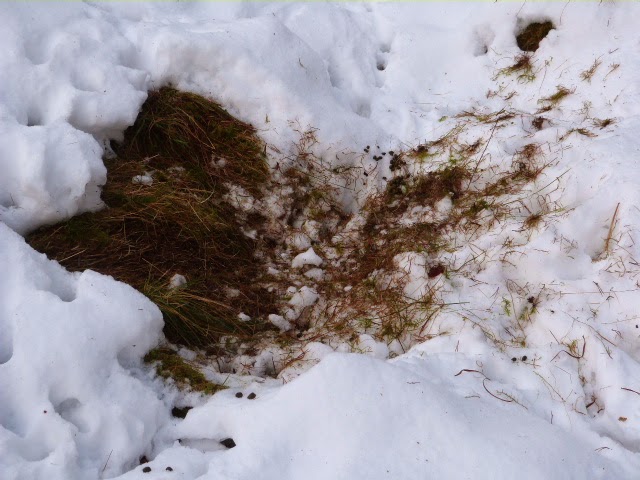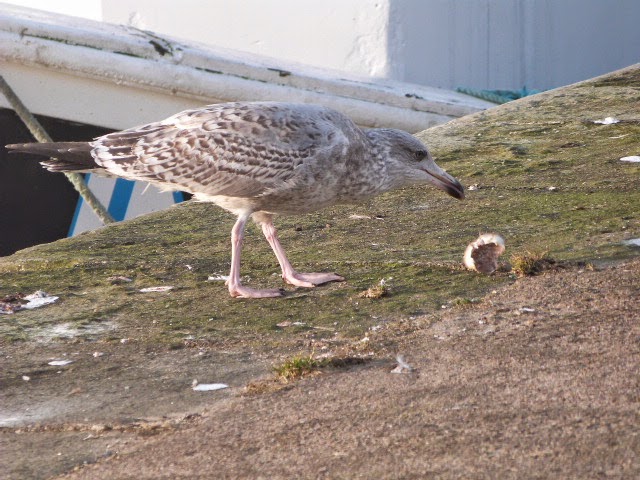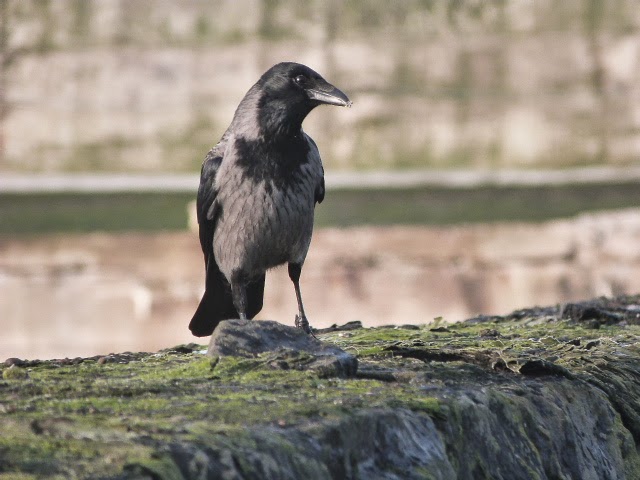I was out for a morning walk with my mum in Whinlatter Forest a week ago, when I noticed an interesting tree. I am pretty sure it was a larch tree, but I didn't pay the actual tree much attention. What had distracted me was what was growing on the bark of the tree. It was a wonderful little collection of biodiversity. There could have been some symbiois going on here - where two organisms live in harmony together - one benefitting the other in some way. But I am unsure as to what exactly the tree might be getting back from its inhabitants!! There won't be many scientific names on this post as I'm not even sure I can even identify the different species! Below is the tree at first glance and then a closer look......
 |
| Larch tree, Whinlatter Forest |
 |
| A closer look at the larch tree - lichen and mosses - Whinlatter Forest |
I was pretty amazed when I had a closer look at the bark that there seemed to be a variety of lichens and mosses growing on the bark. At the base of the trunk was what looked like some pretty common mosses, star moss and sphagnum moss, but I can't accurately identify them specifically. I found an amazing book in Oxfam, 'The Oxford Book of Flowerless Plants" by F.H. Brightman and B.E. Nicholson and published in 1966. It has a wealth of information on Ferns, Mosses and Liverworts, Lichens and Seaweeds and the illustrations are all hand drawn and amazing. It is a brilliant book and is separated into sections such as woodlands, pastures and meadows and what you would expect to find in these different habitats. However I need to study this book more before I can start identifying the mosses correctly!!
 |
| Star moss and Sphagnum moss |
Looking higher up the tree there was more to this little ecosystem.There was some lichen that I know as Devil's Matchstick but there are quite a few different species of this and I am not sure which one it is. Have a look around for this one though, it is pretty cool and really does look like a matchstick. There was also so other 'straggly' lichen ( very scientific - I know!!) growing next to it.
 |
| The red tops of Devils Matchstick on a larch tree, Whinlatter Forest. |
Higher up the tree there was more lichen that is often seen growing on branches of trees and some of it was quite 'leafy' and some of it quite long and straggly!! As you can probably tell by now I need to spend some time identifying these!! There is a lichen though that does grow on the branches of trees and is straggly and is known as beard lichen...not sure if that was my one though! Its on the second picture below.
 |
| Lichen on larch tree bark, Whinlatter Forest |
And there was more.....
 |
| Lichen on larch tree bark, Whinlatter Forest |
 |
| Lichen on larch tree bark, Whinlatter Forest |
So apart from the fact this tree made me realise I don't know my lichens and mosses very well...it reminded how amazing the natural world is. The fact that you don't have to go very far from home to find weird and interesting species and the fact that you can find an amazing amount of biodiversity in a very small space. There is a whole world out there of mosses and lichens and you could spend a lifetime studying one of these families alone!!

































































